Accelerometer: measuring vibrations
To measure vibrations, an accelerometer can be used. An accelerometer contains a piezo element or a MEMS device that is capable to translate movement into a voltage. By using the speaker measurement workflow, the vibrations can be measured as function of frequency.The accelerometer is made by MSI-sensors. Some specs can be found at Mouser Electronics, where it can be bought for about 20US$. You can make a good connection between this device and device or panel to be measured by using some sticky substance.
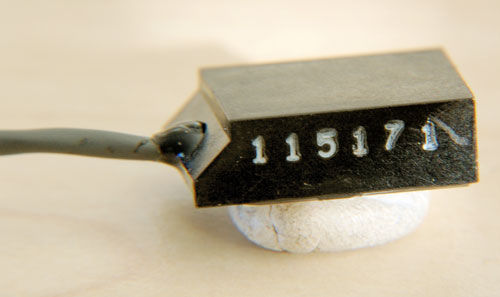
I borrowed this accelerometer from Okke, together with a line-input USB-"sound-card" from Behringer, and a battery-feeded amplifier.
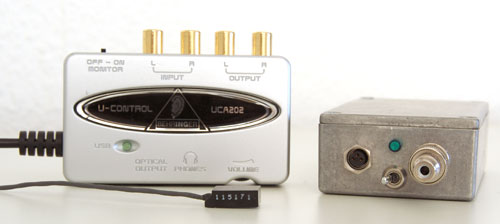
I'm using Fuzzmeasure for the measurements, which is of great help to produce waterfall profiles. As I'm using a laptop, the measurement system is completely decoupled from the mains supply.
I made a "zero-measurement", by sticking the device to the grill of the woofer. This produces the following impulse response, frequency response and waterfall:
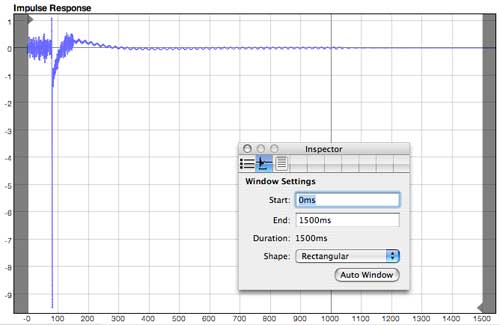
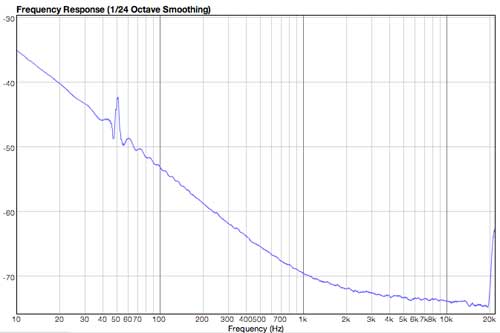
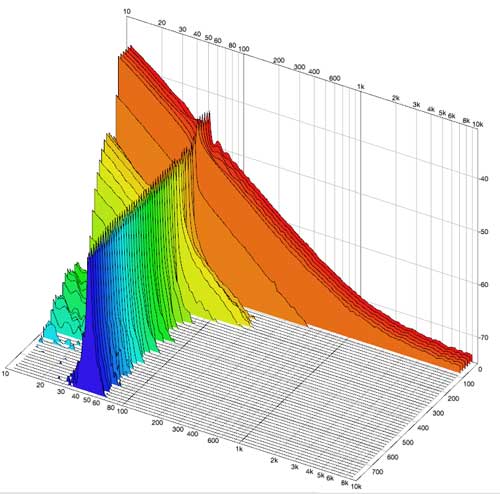
As one can see, there is quite some "noise" in the lower frequencies, and the 50Hz buzz of the amplifier is clearly visible. This shows the extreme sensitivity of this accelerometer. Currently Fuzzmeasure is not capable to subtract this zero-measurement from the other measurement, meaning that the lower frequencies are garbled. As the frequency range to be investigated is outside the 10-100Hz, I exclude it from the subsequent waterfall figures. As I'm not interested in what happens above 10 kHz (basically nothing, as I can see from all the response figure), I also exclude all above 10 kHz, to obtain more resolution inside the region of interest.
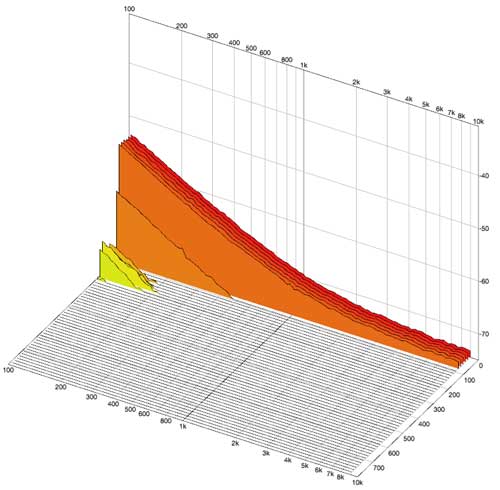
Moving the FFT window to 80 ms, skips the first setup time of the measurement until the pulse response:
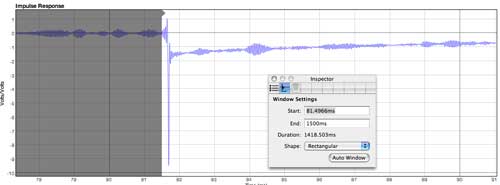
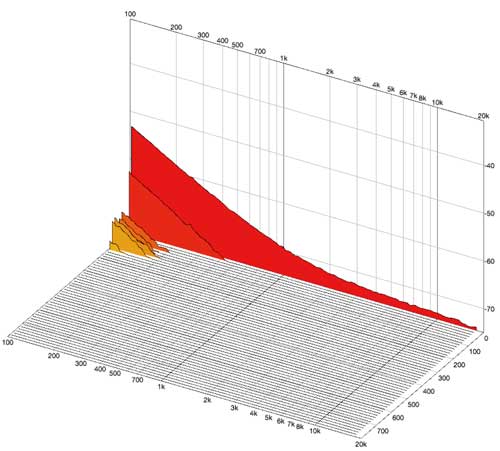
One should realize that the measurements performed with an accelerometer are no acoustic measurements, and they cannot be directly be translated into "sound", as not each surface translates vibration into sound as efficiently. Hence, without extensive calculations that I haven't studied and performed, the measurements can only be used to characterize potential vibrations. At least, it gives me the possibility to distinguish resonances caused by reflections and surface vibrations.
next ->